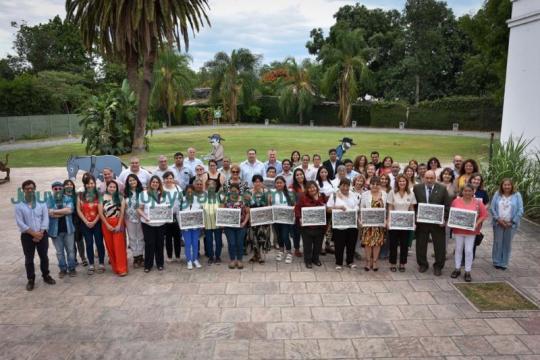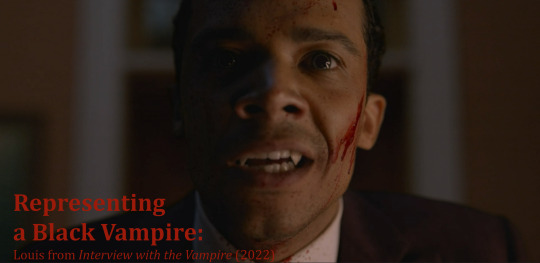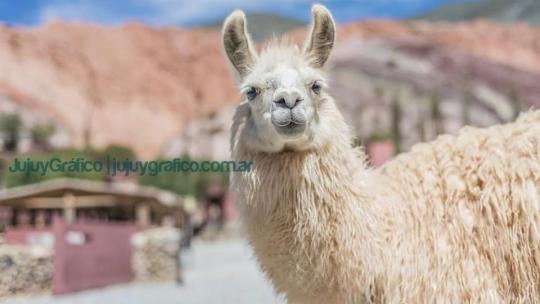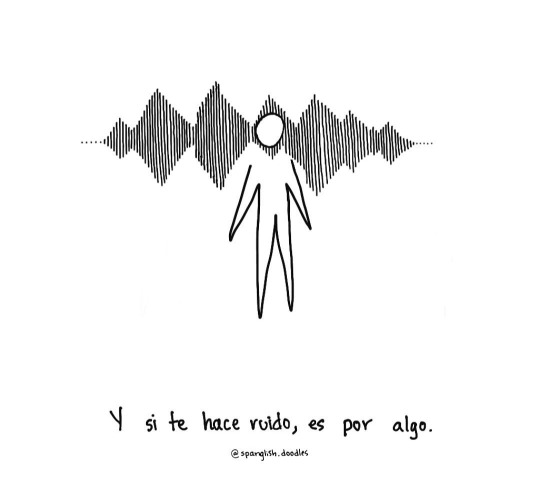#UNJu
Text
La empresa Ledesma despidió el 2022 de trabajo junto a la comunidad
#Jujuy #RSE #Empresariales #Institucionales | La empresa #Ledesma despidió el 2022 de trabajo junto a la comunidad
La empresa Ledesma agasajó a la comunidad de las Yungas con el objetivo de celebrar el acompañamiento y los logros alcanzados en 2022. La actividad se desarrolló en el Centro de Visitantes Ledesma y contó con la participación de referentes de distintas instituciones públicas y privadas.
La empresa Ledesma y la comunidad
En la oportunidad, se inauguró un mural referido al vínculo de la compañía…

View On WordPress
#Centro de Visitantes Ledesma#Diego Pons#El Piquete#Fernando Ferramosca#Ledesma#Ledesma S.A.A. I.#Ledesma SAAI#Leonor Calvó#San Francisco#San Salvador de Jujuy#Santa Bárbara#UNJu#Valle Grande#Vicente Amadeo#Yungas
0 notes
Text
Representing a Black Vampire: Louis from Interview with the Vampire (2022)

youtube
Interview with the Vampire, the 2022 remake of Anne Rice’s 1976 book of the same title, tells the story of Louis de Pointe du Lac, an affluent Black man in 1910 New Orleans, as he is seduced and turned into a vampire by Lestat de Lioncourt, a French vampire who becomes his partner in immortality. Louis narrates his life in an interview, set in 2020, to Daniel Molloy, a famous journalist, and recounts his life before and after becoming a vampire, his struggles with moral questions of vampirism and immortality, and his toxic and unequal relationship with Lestat. The show is very intentional in positioning Louis, a gay Black man, as someone who is othered and misunderstood even before becoming a vampire. Scholar Victoria Herche uses Judith Butler’s discourse of queerness to analyze othering and the supernatural in Cleverman (2016-2017): “In reading the monster as a queer category, representations of the monstrous ‘other’, such as the Hairies and the Namorrodor, offer an alternative space beyond normativity and overcome binary constellations of the objectivized ‘other.’”[1] Monsters and supernatural beings, represented through vampires in the show, both signify “otherness” of existing beyond the human, as well as an empowerment for Louis as a marginalized person. In Episode 1, Louis becomes a vampire because of his relationship with Lestat, and in his speech to Louis, the French vampire acknowledges and affirms the othering and alienation Louis experiences, posing vampirism and a relationship with Lestat as a solution:
“This primitive country has picked you clean. It has shackled you in permanent exile. Every room you enter, every hat you are forced to wear [...] all these roles you conform to and none of them your true nature. What rage you must feel as you choke on your sorrow. [...] I can swap this life of shame, swap it out for a dark gift and a power you can’t begin to imagine. You just have to ask me for it. [...] I love you, Louis. You are loved. [...] Be my companion, Louis. Be all the beautiful things you are, and be them without apology. For all eternity.”[2]
The supernatural power of vampirism not only gives Louis superhuman abilities, but it empowers him to take action against the systemic racism and treatment he faces from white peers in his business of sporting houses (read: really fancy brothels). When Louis gains too much financial power, the white businessmen start a systemic effort to push him and other Black business owners out of the city and buy their properties. In retaliation, Louis hangs a sign, reading “Colored Only. No Whites Allowed” on the door of his largest, most successful business, and violently kills a city councilmember who has been working against him, symbolically hanging his corpse in public alongside a “Whites Only” sign. Before Louis kills him, the councilman condescendingly tries to talk him down, saying, “That’s your problem Louis, always has been. You’re arrogant. You haven’t accepted your place in this world.”[3] The supernatural power and protection that being a vampire affords Louis gives him the confidence and the means to take agency and revenge beyond “his place” within the social structure of white supremacy, which he never allowed himself to do before his transformation. Although vampirism has been associated with villainous action, which could serve to demonize rather than justify Louis’s actions, Interview with the Vampire positions this character as the narrator of his own story and therefore allows him to evaluate his own point of view and justify his actions. Traditionally, the role of “narrator-focalizer” in media, especially that which depicts stories of marginalized groups, is taken by a white narrator, who represents “the authoritative liberal perspective,” and “godlike, oversees and evaluates all the positions.”[4] Unlike other depictions of Black characters, who are depicted as villainous and unjustified in taking agency and especially violent revenge, Interview with the Vampire uses Louis’s own point of view on his story as narrative focalizer, and intentionally reverses traditional depictions of vampirism as villainous, showing his transformation as supernatural empowerment and his actions as justified.
This 2022 Louis represents a complete departure from Anne Rice’s 1976 character, who was a white plantation owner. The original book’s only depiction of Black characters were stereotyped enslaved people, who Rice demonized for practicing African descended religious forms and burning down the plantation to kill Louis and Lestat. Robert Stam and Ella Shohat, in their work, “Stereotype, Realism, and the Struggle Over Representation,” cite Toni Morrison’s idea of “the contradictory nature of stereotypes:” “Black figures, in Toni Morrison's words, come to signify polar opposites: ‘On the one hand, they signify benevolence, harmless and servile guardianship and endless love,’ and on the other ‘insanity, illicit sexuality, chaos.’”[5] Depicting her monolithic Black characters and their religious forms as superstitious and “primitive,” while also making them the only people to figure out the supernatural reality of the main characters’ vampirism, Rice shows her racism through use of contradictory depictions. This novel, as well as many pieces of media that center the supernatural in New Orleans, position Black spirituality and religion as inherently evil, demonic, or at the very least, “uncivilized” and unscientific, below that of white religion and practice. Such is the case in the New Orleans-set show of American Horror Story: Coven, which positions Black and white witches in opposition to each other, and although Black witchcraft, specifically voodoo, “acts [in the show] as a mode of resistance to gendered and racialized oppression,” Jennifer O’Reilly argues that the show’s depiction of voodoo ultimately relies on racist tropes.[6] According to O’Reilly, “the narrative of voodoo as evil and dark persists in Coven and reifies notions of white racial supremacy.”[7] The 2022 Interview with the Vampire is in conversation with this racist and overdetermined depiction of Black supernatural forms in its source material, especially through voodoo in New Orleans, but the show makes absolutely no reference to voodoo or any other forms of Black spirituality. Some might argue that in not depicting this religious practice at all, Interview with the Vampire exists neutrally, not making a stance in either direction. However, I would argue that in the show’s painstakingly detailed references to the original 1976 novel, which does fall into this racist portrayal of Black characters and their religious forms, not including voodoo, especially in the setting of New Orleans, is significant and matters. The show does not exist in a vacuum, and it seems to intentionally break away from the stereotypical depictions that Hollywood is full of when it could very easily fall into them (as the 1994 film adaptation does). Using the example of Western Eurocentric representations of African religions, Stam and Shohat seek to in their writing to show that “the flawed mimesis of many Hollywood films dealing with the Third World, with their innumerable ethnographic, linguistic, and even topographical blunders, has less to do with stereotypes per se than with the tendentious ignorance of colonialist discourse.”[8] After listing Hollywood’s commonly presented racist discourses around African religion, which “enshrine prejudices in patronizing vocabulary,” the theorists propose alternatives: “In a less Eurocentric perspective, all these "deficiencies" might become advantages: the lack of a written text precludes fundamentalist dogmatism; the multiplicity of spirits allows for historical change; bodily possession betokens an absence of puritanical asceticism; the dance and music are an aesthetic resource,”[9] Interestingly, not only does Interview with the Vampire (2020) erase racist imaginaries of Black supernaturalism from its narrative, but it actually utilizes multiple elements of Stam and Shohat’s examples of decolonized approaches to representation, especially in its “lack of written text.”
The emphasis on oral storytelling in Interview with the Vampire, specifically that of Louis, uplifts his othered voice, and represents a break from the Eurocentric emphasis on the written word that Stam and Shohat refer to. To solve problems of media representations which serve to individualize, moralize, and essentialize “good” or “bad” characters, rather than discourses of power in the media, the theorists propose emphasis on the auditory rather than visual representation “as a way of restoring voice to the voiceless.”[10] The entire narrative of the show relies on the auditory overlay of Louis’ narration in his interview with the journalist Daniel Molloy. Although his reliability as a narrator is called into question many times by Molloy, his apparent untrustworthiness does not serve to discredit his voice as an underrepresented “Other” as it may seem, but rather complicates him as a character. Stam and Shohat make the point that marginalized characters are very easily portrayed as “good” or “bad,” which leads to essentializing and moralizing of those characters, especially when characters of color are seen to represent their entire communities rather than their individual selves.[11] They also note that often, even sympathetic portrayals of marginalized people maintain the presence of a “European or Euro-American character as a mediating "bridge" to other cultures,” aptly named as “bridge character.”[12] In other words, “Media liberalism, in sum, does not allow subaltern communities to play prominent self-determining roles, a refusal homologous to liberal distaste for non-mediated self-assertion in the political realm.”[13] Molloy, who comes from Anne Rice’s novel, represents this bridge character, but is not given as much narrative power as Louis has in the show. Interview with the Vampire effectively discounts the novel’s role of a bridge character, empowers Louis in the narrative, and allows him to play his own self-determining role. In addition, the Eurocentric valuing of the written word over oral storytelling is obliterated through the medium of television, which uplifts Louis’s narrative through auditory means, in comparison to the novel, which, as a book, inherently leans into the written word.
Interview with a Vampire (2022) is an incredibly effective remake of the original novel, casting off implicit discourses of white supremacy and Eurocentrism in exchange for genuinely good representation, and more nuanced and interesting storytelling. The show is incredibly aware of its source material, and clearly makes conscious efforts to diverge from previous problematic narrative elements and use the historical othering of supernatural villains, specifically vampires, to empower marginalized and othered communities and characters. Louis, as a vampire character, and a marginalized queer Black man, is made all the better for every single part of his identity, and Interview with the Vampire truly allows him to, as Lestat foretells in the very first episode, “Be all the beautiful things you are, and be them without apology:” a complex, flawed, and compelling character.[14]
Bibliography:
Herche, Victoria. “Queering the Dreaming: Representations of the ‘Other’ in the Indigenous Australian Speculative Television Series Cleverman.” Gender Forum 81 (2021): 30-47.
O’Reilly, Jennifer. “‘We’re More than Just Pins and Dolls and Seeing the Future in Chicken Parts’: Race, Magic and Religion in American Horror Story: Coven.” European Journal of American Culture 38, no. 1 (2019): 29-41.
Powell, Keith, dir. Anne Rice’s Interview with the Vampire. Season 1, episode 3. “Is My Very Nature That of a Devil.” Aired October 16, 2022, AMC.
Stam, Robert and Ella Shohat. “Stereotype, Realism, and the Struggle Over Representation.” In Unthinking Eurocentrism: Multiculturalism and the media. Routledge, 2014.
Taylor, Alan, dir. Anne Rice’s Interview with the Vampire. Season 1, episode 1. “In Throes of Increasing Wonder...” Aired October 2, 2022, AMC.
[1] Victoria Herche, “Queering the Dreaming: Representations of the ‘Other’ in the Indigenous Australian Speculative Television Series Cleverman,” Gender Forum 81 (2021): 44.
[2] Anne Rice’s Interview with the Vampire, season 1, episode 1, “In Throes of Increasing Wonder...,” directed by Alan Taylor, aired October 2, 2022, AMC. 00:59:32-01:03:09.
[3] Anne Rice’s Interview with the Vampire, season 1, episode 3, “Is My Very Nature That of a Devil,” directed by Keith Powell, aired October 16, 2022, AMC. 00:36:04 -00:36:13.
[4] Robert Stam and Ella Shohat, “Stereotype, Realism, and the Struggle Over Representation,” in Unthinking Eurocentrism: Multiculturalism and the media. (Routledge, 2014), 206.
[5] Ibid, 203.
[6] Jennifer O’Reilly, “‘We’re More than Just Pins and Dolls and Seeing the Future in Chicken Parts’: Race, Magic and Religion in American Horror Story: Coven,” European Journal of American Culture 38, no. 1 (2019): 39.
[7] Ibid, 36.
[8] Robert Stam and Ella Shohat, “Stereotype, Realism, and the Struggle Over Representation,” 201-202.
[9] Ibid, 202.
[10] Ibid, 214.
[11] Ibid, 183
[12] Ibid, 205
[13] Ibid, 206
[14] Anne Rice’s Interview with the Vampire, season 1, episode 1, “In Throes of Increasing Wonder...,” directed by Alan Taylor, aired October 2, 2022, AMC. 1:02:53-1:03:04.
@theuncannyprofessoro
3 notes
·
View notes
Text
Someone shook my shoulder. “Wake up. Ella, wake up.”
An order. I was awake.
Areida thrust a roll into my hands. “It’s all I could get. Eat it before the others come in.”
In two swallows I ate the soft white roll, more air than sustenance. But more sustenance than I’d had in days.
“Thank you. Do you sleep in here too?”
She nodded.
“Where?”
The door opened and three maidens entered.
“Look! Queer ducks flock together.” The speaker was the tallest pupil in the school. She pronounced her l’s as y’s, mocking Areida’s accent.
“Ecete iffibensi asura edanse evtame oyjento?” I asked Areida. (“Is this how they behave at finishing school?”)
“Otemso iffibensi asura ippiri.” (“Sometimes they are much worse.”)
“Are you from Ayortha too?” the tall maiden asked me.
“No, but Areida is teaching me the beautiful Ayorthaian language. In Ayorthaian, you are an ‘ibwi unju.’” It only meant “tall girl.” I didn’t know any insults in Ayorthaian. However, Areida was laughing, which made it seem the worst of epithets.
I laughed too. Areida collapsed on top of me, and together we shook the purple chair.
- Ella Enchanted by Gail Carson Levine
#book quote#ella enchanted#gail carson levine#ella of frell#areida#ya fantasy#romance#quote#quotes#booklr#bookblr
4 notes
·
View notes
Text
there being only one (1) live performance of ciiphr’s joker and it’s on con-tour live is one of so many things that are upsetting & distressing & unfair & unju—
2 notes
·
View notes
Video
youtube
UPDATE BURUH KEPUNG GEDUNG SATE, Massa Perlahan Mulai Penuhi Lokasi Unju...
0 notes
Text
ISLAM 101: Muslim Culture and Character: Embracing The World: Part 11
TOLERANCE
As a nation, we are experiencing an intense fervor of recovery and revival. If a wind of opposition does not hinder us, the coming years will be our “years of becoming.” However, there are differences in the methods of recovery and revival. There has been a difficulty in arriving at a mutual agreement as to which methods we should accept and which we should reject regarding the renewals in our intellectual and cultural life over the last few centuries. Also, there has been a difference in style and method used in blowing a new spirit into society. The nuances that appear in building a bridge between the past and future fill us with hope, yet at the same time, it seems that troubled days await us.
Thus, while walking toward the future as a whole nation, tolerance is our safest refuge and our fortress against the handicaps that arise from schism, factions, and the difficulties inherent in reaching mutual agreement; troubles that lie waiting at every corner.
We should have such tolerance that we are able to close our eyes to the faults of others, to have respect for different ideas, and to forgive everything that is forgivable. In fact, even when faced with violations of our inalienable rights, we should remain respectful to human values and try to establish justice. Even before the coarsest thoughts and the crudest ideas, ideas that we find impossible to share, with the caution of a Prophet and without losing our temper, we should respond with mildness. This mildness is presented in the Qur’an as “gentle words”; it will touch the hearts of others. This mildness is the result of a tender heart, a gentle approach, and mild behavior. We should have so much tolerance that we can benefit from opposing ideas in that they force us to keep our heart, spirit, and conscience active and aware, even if these ideas do not directly or indirectly teach us anything.
Tolerance, a term which we sometimes use in place of the words respect, mercy, generosity, or forbearance, is the most essential element of moral systems; it is a very important source of spiritual discipline and a celestial virtue of perfected people.
Under the lens of tolerance, the merits of believers attain new depths and extend to infinity; mistakes and faults become insignificant and whither away until they are so small that they can be placed into a thimble. In fact, the treatment of He Who is beyond time and space always passes through the prism of tolerance, and we wait for it to embrace us and all of creation. Because of the broadness of this embrace, when a corrupt woman who had given water to a thirsty dog touched the knocker of the “Door of Mercy,” she found herself in a corridor extending to chastity and Heaven. Similarly, due to the deep love, he felt for God and His Messenger, a drunk suddenly shook himself free and attained companionship of the Prophet. In another example, with the smallest of Divine favors, a bloody murderer was saved from his monstrous psychosis and headed toward the highest rank; a rank that far surpassed his natural ability and, one that in the end he actually reached.
We all want everyone to see us through this lens and we expect the breezes of forgiveness and pardon to constantly blow in our surroundings. All of us want to refer our past and present to the climate of tolerance and forbearance that melts, transforms, cleans, and purifies and then to walk toward the future securely, without feeling any anxiety. We do not want our past to be criticized or our future to be darkened because of our present. All of us expect love and respect for a whole lifetime, hope for tolerance and forgiveness, and want to be embraced with feelings of liberality and affection. We expect tolerance and forgiveness from our parents in response to mischievousness at home, from our teachers in response to our misbehavior at school, from those innocent victims toward whom we have acted unjustly and oppressed, from the judge and prosecutor in court, from our army commanders, from police officers and from the Judge of Judges in the Highest Tribunal.
However, deserving of what we expect is very important. Anyone who does not forgive has no right to expect forgiveness. Everyone will receive disrespect to the degree that he has been disrespectful. Anyone who does not love is not worthy of being loved. Those who do not embrace all of humankind with tolerance and forgiveness have lost their worthiness to receive forgiveness and pardon. An unfortunate one who curses others does not have the right to expect respect from others. Those who curse will be cursed and those who beat will be beaten. If true Muslims observed such Qur’anic principles as the following and were to go on their way and tolerate curses deep in their breasts, then others would appear in order to implement the justice of Destiny on those who cursed us.
When they meet hollow words or unseemly behavior, they pass them by with dignity. (Al-Furqan 25:72)
If you behave tolerantly, overlook, and forgive (their faults) … (At-Taghabun 64:14)
In countries rife with corruption, intolerance, and mercilessness, such things as freedom of thought, polite criticism, and the exchange of ideas according to norms of equity and fairminded debate are absent; it would be meaningless to talk of the results of logic and inspiration. In my opinion, this must be the real reason that for years no progress has been made, in spite of plenty of empty boasting.
For years, there have been numerous examples of immorality although their perpetrators have received their share of tolerance. Despite this, attempts continue to be made to label innocent people as “backward fanatics who support theocratic regimes.” “Fundamentalism” is another fashionable term with which to smear them. Moreover, Islam has been accused of not keeping up with the times. We frequently observe with sorrow today that those who did nothing more than express their religious feelings have been branded as reactionaries, fanatics, and fundamentalists. Unfortunately, some people do not distinguish between being truly religious and blind fanaticism.
It is not possible to talk about common ideas or a collective consciousness in communities where individuals do not look upon one another with tolerance or in countries where the spirit of forbearance has not become fully entrenched. In such countries, ideas will devour one another in the web of conflict. The work of thinkers will be futile, and in such countries, it will not be possible to establish sound thought or freedom of belief or thought. These things will not be allowed to flourish. In fact, it cannot be said that in such a country the state has been based on a true system of justice; even if this appears to be the case, it is nothing more than a sham. Actually, in a place where there is no tolerance, it is not possible to talk about healthy media, scholarly thought, or pertinent cultural activities either. What we see when we look at the things that carry such names are only some fruitless, one-sided efforts made according to certain thoughts and a certain philosophy; expecting something fresh, beneficial and promising for the future from these is futile.
#Allah#god#islam#quran#muslim#revert#revert islam#convert#convert islam#converthelp#reverthelp#revert help#revert help team#help#islam help#salah#dua#prayer#pray#reminder#religion#mohammad#muslimah#hijab#new muslim#new revert#new convert#how to convert to islam#convert to islam#welcome to islam
0 notes
Text
0 notes
Text
0 notes
Text
0 notes
Text
Convocatoria al "IX Congreso Mundial sobre Camélidos"
#Jujuy #Ganadería | Convocatoria al "IX #CongresoMundial sobre #Camélidos"
El Gobierno de la provincia de Jujuy, a través del Ministerio de Desarrollo Económico y Producción, tiene el agrado de anunciar la primera circular el “IX Congreso Mundial sobre Camélidos”, que se llevará a cabo entre los días 31 de agosto y 2 de septiembre de 2023.La elección de Jujuy como sede del evento de alcance mundial surgió durante plenario del VIII Congreso Mundial sobre Camélidos de…

View On WordPress
#Azucena Quintana#Bolivia#camélidos#Congreso Mundial#Desarrollo Económico#Exequiel Lello Ivacevich#Instituto Nacional de Tecnología Agropecuaria#Jujuy#Oruro#Producción#Senasa#Universidad Nacional de Jujuy#UNJu
0 notes
Text
0 notes
Text
AUDIO | Nikki Mbishi X Cjamoker - Wanadai | Download

AUDIO | Nikki Mbishi X Cjamoker - Wanadai | Download
Download Link
Read the full article
#AfricanHipHopMusic#Audio#BabaMalcom#Binunuki#Cjamoker#HipHopCulture#newbongoflavamusic#newrelease#NikkiMbishi#swahilihiphop#TamaduniMusic#Unju
0 notes
Photo

Wanju-Gun, Jeollabuk-do, South Korea
I had hoped to get a another shot of this tree all winter and had just about given up hope when a rare late March freak dump of snow gave me my last chance. It turned out to be a fun albeit exhausting morning.
by Nathaniel Merz from South Korea
Source | Google Maps
#Photography#South Korea#Wanju-gun#Travel#Jeollabuk-do#Wanderlust#Destinations#Unju-myeon#South Chungcheong Province#Landscape#Landscapes#Republic of Korea#Nathaniel Merz#Snowy#Brilliant#Mountain#Glow#Mountain Range#Spring Mountains#Snow#Snowcapped#Capped#Morning#Cold#Bright#Wbpa
77 notes
·
View notes
Note
I was wondering. What's your view of the conflict that happened between Team RWBY and Ozpin? Either an in universe view or meta view (like how they are written and how well)
This is one of those "hot topic" things in the fandom, isn't it? Alright, I'll play.
Ozpin was an ass. But he was an ass for an understandable reason.
Before anything else, I think we really, really need to remember what we, those of us who were already in the fandom at that point and had been for some time, were actually thinking.
People seem to have forgotten that for a long, long time leading up to the premiere of The Lost Fable, there was a popular theory that Ozpin might've actually been responsible for Salem; that his actions in the past somehow screwed her over and gave her a justifiable grudge against him. A few were honestly speculating that he was actually evil, a hidden villain who'd been puppeteering the heroes all along for his own ends.
Theories about him sending Summer to her death or being responsible for this or that villain's origin story were rampant for the entirety of the first five volumes. That's five full years real-world time, guys.
In Volume 6, chapter 2, when Team RWBY go after him like they do, fed up with his secret-keeping and demanding he finally gives them answers, that's not just them being unreasonable abusers so many want to paint them as; it's not even solely the justified emotional response of people sick of being lied to: It's exactly what the audience wanted to see.
We all, at the time, wanted exactly this; we wanted Ozpin called out for his secret-keeping, and we wanted his secrets spilled out in the open, and the fact that he was resisting and fighting tooth and nail against it just made us that much more insatiable to know what secrets he was keeping.
Because, hey, if he's that determined to hide it, it must be really bad right?
And then... it's really not. Turns out he was easily the biggest victim in that whole mess. A victim of Salem, arguably a victim of the Brothers (that's an entirely different conversation).
Perceptions shift. We finally see the man behind the curtain, and it's not at all what we expect. Suddenly Ozpin's not the secretive mastermind cunningly manipulating the heroes, he's not even the brilliant mentor slyly guiding them along his plan to victory; he's a sad broken man barely holding the world together, lonely and terrified of yet more betrayal. So terrified he'll lie to his own allies to keep them from abandoning him (again).
Another problem actually arises here: people see Team RWBY's reaction as not flowing naturally from what they just witnessed. There's an incongruity here, and it bears elaboration: we already knew Salem was immortal. Or at least, we assumed it. It had never been outright stated in the series, but I think most people were pretty clear that if Salem could be killed by any conventional means, it would've happened already. We didn't know the extent of her immortality, or the cause, but was anyone actually shocked to learn that she can't simply be killed?
Out of everything we learn, that is the single least-surprising element of the entire story. So, when it becomes clear that Team RWBY thought Salem could theoretically be killed like any other Grimm, it doesn't really follow for the audience. Then that's the thing the show chooses to focus on like it's a shocking reveal, when to the audience it really doesn't feel like one. From Team RWBY's perspective, they've been risking their lives for what just turned out to be an impossible mission, and that emotional reaction overrides sympathy for Ozpin's motives, and they've heard enough people claiming he's untrustworthy that they're as primed to believe the worst as we were. But because the audience fully expected some form of "She can't easily be killed" to come up, well, it doesn't sit that way for the audience, who will be focusing far more on Ozpin's tragic story. So from they're perspective, Team RWBY are completely unjustified in their anger.
249 notes
·
View notes

